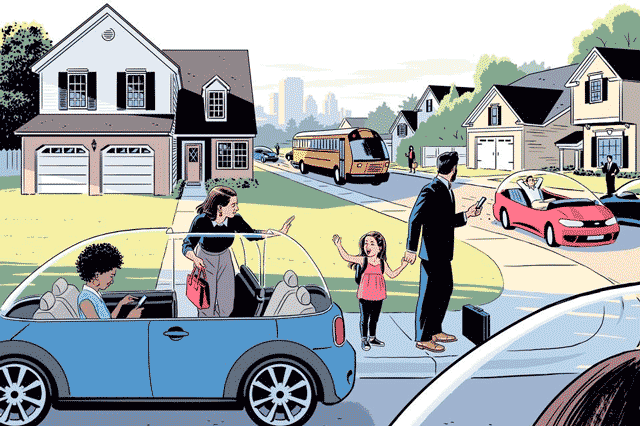Although it may seem incredible where you live matters when determining the insurance fees to pay. For insurance companies this data is a fundamental aspect. If you live in a city or region considered high risk, you may have to pay a little more than someone else who lives in an area close to yours.
Couta of auto insurance according to the risk assessment of the place of residence
It’s all about risk assessments. There are places where more accidents occur than others. And this often depends on the amount of traffic, that is, the number of cars circulating. Places with higher traffic tend to have more accidents. However, sometimes the differences are difficult to understand.
How are risks assessed?
Risk is a calculation that insurance companies make based on how many drivers have had accidents annually (drivers with profiles similar to yours, that is, the same age, marital status, sex, etc.). For example, a 45-year-old man from urban New York, with no previous accident record, will be associated with high risks similar to other drivers of the same age in the area. The number of accidents that these drivers have had in a year will increase or decrease the risk for all possible candidates of the same age range.
As you will realize, this risk affects the insurance premiums to be paid by drivers. Although your personal driving record is important, you will always be classified next to a certain group, or profile of drivers, over which you have no control. It may sound unfair, but this is how insurers are able to stabilize premium prices for all drivers, regardless of which groups they belong to.

Relationship “High risk area – Insurance fee to pay”
Let’s explain this in another way, if an area has a large number of young or older drivers, the insurance rates tend to increase for all candidates. This is due to the fact that this area has high statistical probabilities of accident occurrence. That idea may seem strange, especially if it is an area without high volume of traffic. But remember that everything is calculated according to statistical probabilities.
Similarly, any region close to a large city tends to have higher quotas. This is so, because it is assumed that the residents of it drive to the city to work, go shopping or do any other activity. Although these drivers spend little time in the city, they will still have to pay higher fees compared to those who reside in more remote areas. Even those who live further away and drive into the city to work can pay lower fees than those who live nearby, even though they hardly visit the city.
It is important to remember that the high risks apply to specific geographic areas, not to specific types of drivers. If, for example, you have clean driving records, you are over 25 years old and you meet your insurance payments on time, you could get lower rates, even if you live in an area considered high risk. They are lower, since insurers benefit you with discounts for meeting their low-risk profile.
Some tips before buying car insurance
Taking the above into account, it is not always true that because you live near or in a big city, or in places considered high risk for insurers, you have to pay more. Something that can help you in this regard is to buy low mileage insurance, so your rates could decrease a lot. This type of insurance is designed for people who do not drive regularly. Which represents for the insurance company lower risks of accident occurrence.
Another case in which it is possible to reduce the payment of high fees is if the insurer establishes the distinction between the purposes for which clients drive, for example, if they do it for work or for entertainment. If your insurance company is small and have offices in the suburbs, it could make the difference between drivers who drive into the city, and those who only keep driving within the same suburbs.
We have addressed the previous aspects so that you understand how despite living in high risk areas lower premiums can be achieved from insurance agencies. In any case, most insurance companies follow the process according to geographical areas, explained at the beginning. That is why it is important to maintain close communication with the insurers or insurance agent, to raise all these doubts and options, and thus try to obtain more favorable rates.
